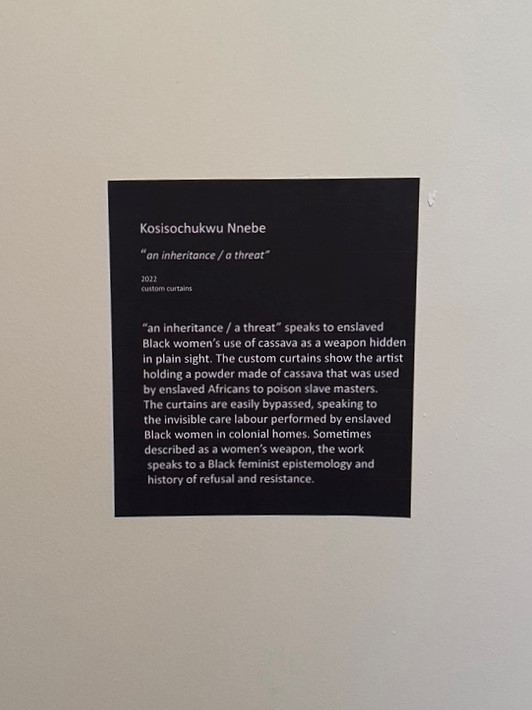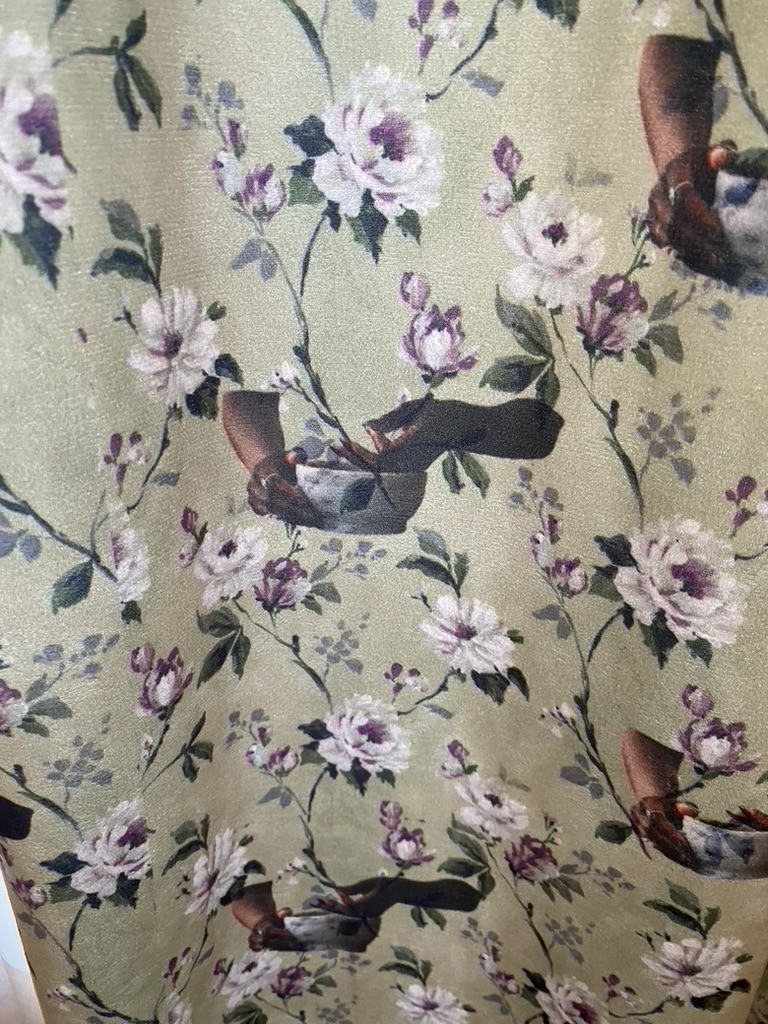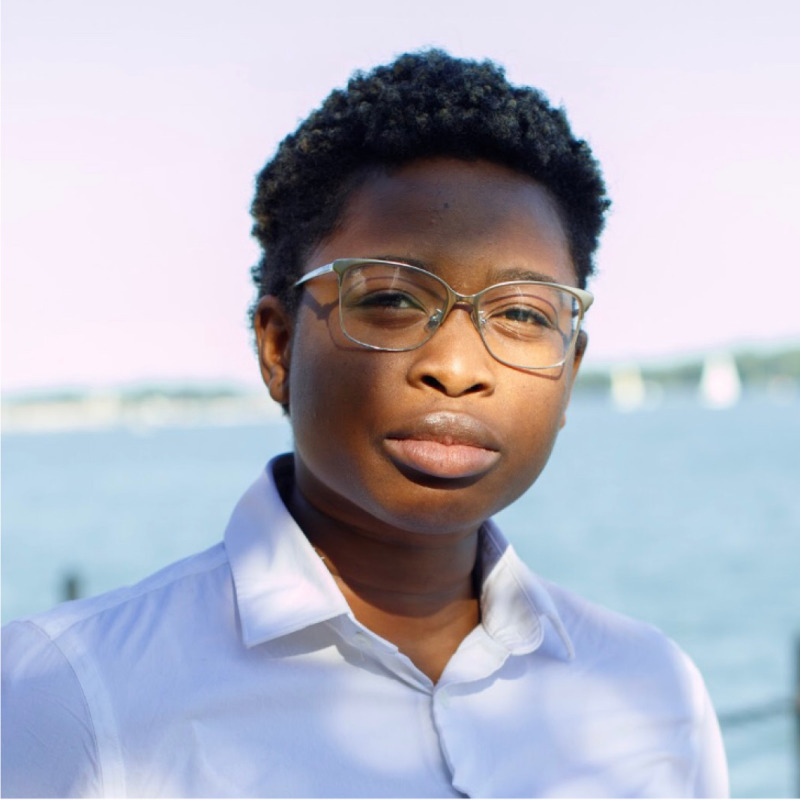‘Brown Butter’ Heals from the Inside Out
This is a collaborative review by Kemi King and Freddy Van Camp
Something is brewing at Agnes Etherington’s former home.
Correction: something is rising, proofing, marinating, braising, and burning at the Agnes.
The once off-limits preserved home has been brought to life by curator Berlin Reed. Brown Butter is a multidisciplinary, interactive exhibit by Black and Indigenous artists Jade Fair, Kama la Mackerel, Kosisochukwu Nnebe, Odeimin Runners Club, Rye, Gloria C. Swain, and Syrus Marcus Ware.. The work sitting in the Agnes house is a strong call for reclamation and power through food, community, and planting roots. The overall effect is one of complete nourishment, in every sense of the word.
Entering the original home, an abundance of artwork spanning multimedia, to sculpture, to fibre arts is seamlessly integrated into the space, and yet, a domination and subversion of the dated home by other pieces. It’s as if the art has broken out from behind the plaster and made itself a home here in the former abode of Agnes Etherington. Blurring the lines of a traditional exhibition, Brown Butter is thoughtful in its offering to the observer, rewarding one for looking deeper into both the artworks and the building itself. Nothing is too innocuous or subtle—every element has meaning.
Those in attendance on July 10, 2022 were able to experience Brown Butter on its final night with the self-described “house party”. While a party is a celebration, it is also a space of congregation. Many of the attendee’s had some connection to Queen’s University—some involved with the work itself, and others members of the general public. The Agnes atrium was filled with dancing and laughter. The function extended outside the building where some folks sat for a breath of fresh air, to sit with their thoughts, or to be in conversation with friends. The exhibition does not tip-toe around its topics of reclamation, medical violence, and colonialism.

Photo credit: Freddy Van Camp

Photo credit: Freddy Van Camp
Brown Butter does not let viewers forget the impact of colonialism on Black and Indigenous bodies, and spaces, sometimes touching on ideas of surveillance, where particular installations involved video footage. Nick Roman* speaks about a term they learned from Queen’s Professor Dr. Katherine McKittrick, the ‘historical present’. The Historical Present as taught by Dr. McKittrick explores the social, political, economic and bodily ramifications of colonialism and the transatlantic slave trade, marking historical continuities and ruptures. This concept of surveillance, and controlling images are subverted as the power is in the hands of the creators— of the ones who are often surveilled. This concept is heavily apparent by a certain installation where a femme presenting person is seen from various angles preparing a meal.
In our quick chats with Dr. Yasmine Djerbal, Dr. Kristin Moriah, Alyssa Vernon, and Nick Roman* we touched on the possible futures of Agnes and the city, planting seeds, and community building. The exhibit prompts visitors to take items like seeds and tea home with them. Dr. Djerbal first experienced the exhibit a few weeks before the party and mentioned to us how powerful it was to see her seeds start to sprout. Being asked to plant and distribute the seeds, it also became clear to Vernon that this was an ask for reconnection to the soil, as the act of spreading seeds throughout the city is a means of imagining the futures of Black and Indigenous presence in the city.
The entire exhibit is a collaboration between the aforementioned artists and chefs Rawan Ali, Marissa Leon-John, and Bashir Mynye. There is a continuous connection to food and meal sharing, Ali noting that “In the simple act of eating, we are all welcome at the table.” Dr. Djerbal mentioned at the solstice party earlier, the presence of food was a source of engagement. There was meant to be food at this event as well, but unfortunately, it was unable to happen. As a free event, it still invited and ensured all sorts of folks felt welcome in the space.

Photo credit: Freddy Van Camp
Many organizations have been inviting BIPOC and marginalized people to have a seat at the table. Yet oftentimes, the invitation is offered without the correct systems in place to support the people that are invited in. As part of Rehoming Agnes, Brown Butter is a loud sentiment to the kinds of changes the gallery is willing to make and the people who are welcome at the table. The exhibition acts as a send off to the Agnes as we know it, as new renovations take place and plans for more inclusive and intentional work come into the location and community. As a board member of the Agnes, Dr. Moriah spoke to what the future of space could look like, noting that “there are no limits as to what can be done. Queen’s and Kingston are able to withstand change as it is built of limestone. We are operating from a position of strength.” The house party served as a perfect way to close the exhibit, as a loud and uncontained celebration of Blackness and Indigeneity.
The collaborative and immersive nature of this project is really built for the spectator as much as it is for the space. Brown Butter is a challenge to the Etherington house—challenging its history, its biases, its caretakers, and its future. Visitors are invited to fulfil the artists’ calls to action, one taking shape in a poem that imagines a hopeful future of Black and Indigenous collaboration, community, and a kind of harmonious relationship with nature.
Overall, the exhibit presses on its viewers a sort of invitation to ongoing conversations that are taking place here. A call to community that encourages nourishment through art, stories, and food in all equal measure.
*Nick Roman is a pseudonym.
